Fiore di Gypsophila - Scopri Come Coltivare l'Alito del Bambino Fiore
L'alito del bambino è una pianta che ama il sole e il calore. È conosciuta soprattutto come aggiunta a vari bouquet che si possono ordinare in un negozio di fiori. Pochi sanno ancora che la gypsophila può essere coltivata nei giardini e sui balconi. Verificate le esigenze di questa pianta. Imparate a conoscere le varietà di alito di bambino e scoprite perché vale la pena averla.
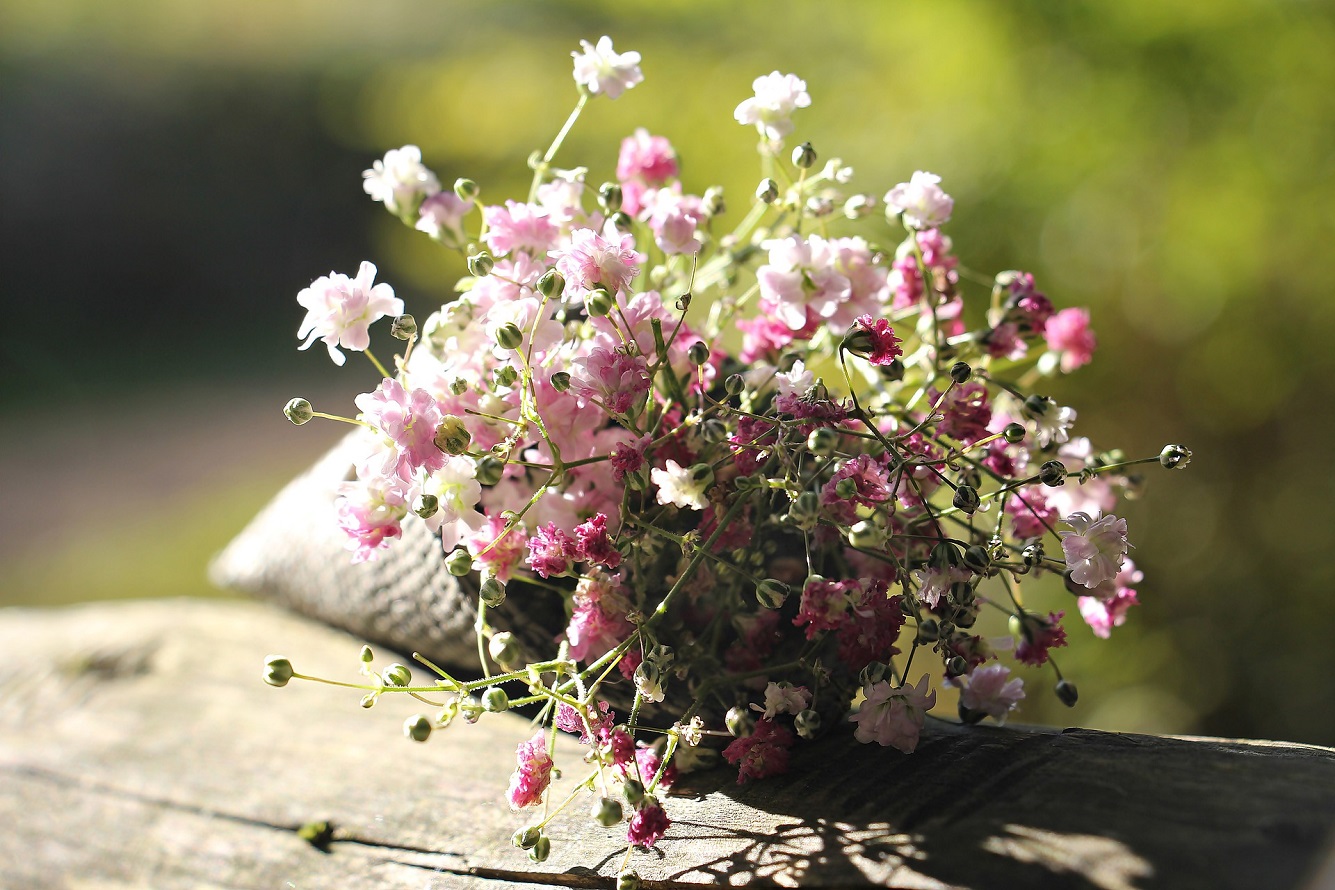
Alito di bambino - che tipo di pianta è?
L’alito del bambino (Gypsophila) è una pianta della famiglia delle Caryophyllaceae. Cresce naturalmente nelle regioni del Mar Mediterraneo, soprattutto perché ama il caldo. **Alcune varietà crescono anche in Asia e in Australia.
L’alito del bambino può essere facilmente coltivato in un giardino o su un balcone. Ma è bene notare che richiede determinate condizioni per svilupparsi: è un fiore piuttosto esigente. È bella in compagnia di altre piante o arbusti ornamentali. Soprattutto, la gypsophila può essere utilizzata in bouquet per decorare gli interni della casa.

Che aspetto ha l’alito del bambino?
L’aspetto di un fiore di alito di bambino dipende soprattutto dalla sua varietà. Ma la maggior parte di essi non cresce più di 80-90 cm. La pianta è leggermente cespugliosa e i suoi rami sono molto delicati. Le loro punte terminano con molti fiori.
L’alito di Panico con fiori bianchi è la varietà più popolare. Può avere altri colori, come
- rosa,
- viola.
Quale posizione e terreno preferisce l’alito del bambino?
Un terreno leggermente sabbioso o calcareo è la soluzione migliore per il fiore dell’alito. La permeabilità è l’aspetto più importante, poiché la pianta non ama l’acqua stagnante e reagisce male ad essa. La scelta del terreno giusto è fondamentale per la crescita della pianta. Ma è bene sapere che la pianta non ama i trapianti, quindi assicuratevi che rimanga in un posto dopo la messa a dimora.
La Gypsophila predilige le posizioni soleggiate, dove la pianta sviluppa la maggior quantità di fiori. Inoltre, è bene ricordare che l’alito del bambino deve essere protetto dal vento. I forti colpi potrebbero spezzare i delicati steli.
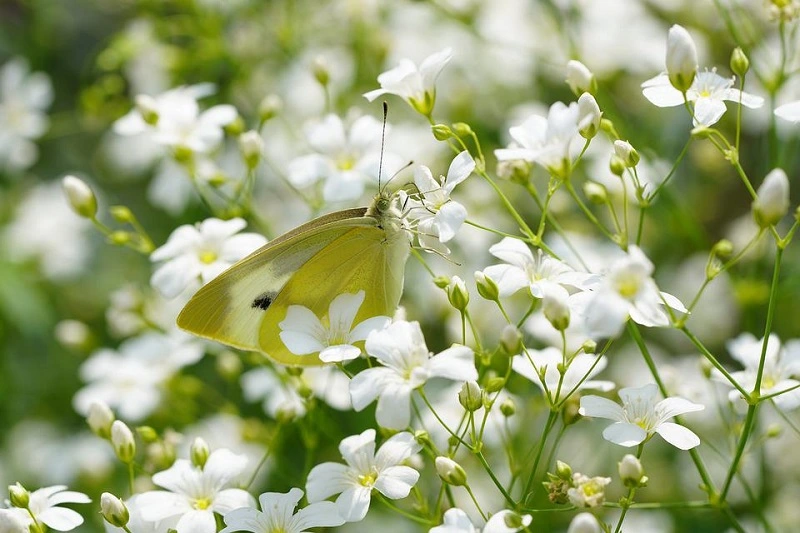
Come coltivare l’alito del bambino - cura di base della pianta
L’alito del bambino richiede condizioni di coltivazione eccellenti. Ma prendersi cura della pianta non è complicato. Per godere di una bella fioritura, è necessario prendersi cura di alcuni elementi essenziali.
- Se gli steli della gypsophila crescono intensamente, potreste decidere di sostenerli con un bastone. A questo scopo si possono usare canne di metallo o di bambù, reperibili nei centri di giardinaggio.
- Non annaffiate troppo spesso la gypsophila, anche in caso di siccità prolungata. Se la siccità si protrae per più di una settimana, assicuratevi di innaffiare la pianta.
- Concimate regolarmente la pianta di alito di bambino con un prodotto studiato per le piante da fiore. Si possono usare miscele universali o un fertilizzante con potassio, calcio e azoto.
- La Gypsophila deve essere tagliata al termine della fioritura. In questo modo, la pianta può rigenerarsi meglio.
Come e quando piantare i semi di alito di bambino?
Prima di piantare l’alito del bambino, bisogna preparare le piantine. I semi devono essere piantati in contenitori e tenuti al chiuso, già tra gennaio e febbraio. In questo modo potranno essere piantati in terra a marzo.
Si noti che la gypsophila è una pianta che cresce in larghezza. Ciò significa che è necessario mantenere un’ampia distanza tra le piantine. Grazie a ciò, i fiori possono svilupparsi correttamente. È sufficiente una distanza di circa 60 cm.
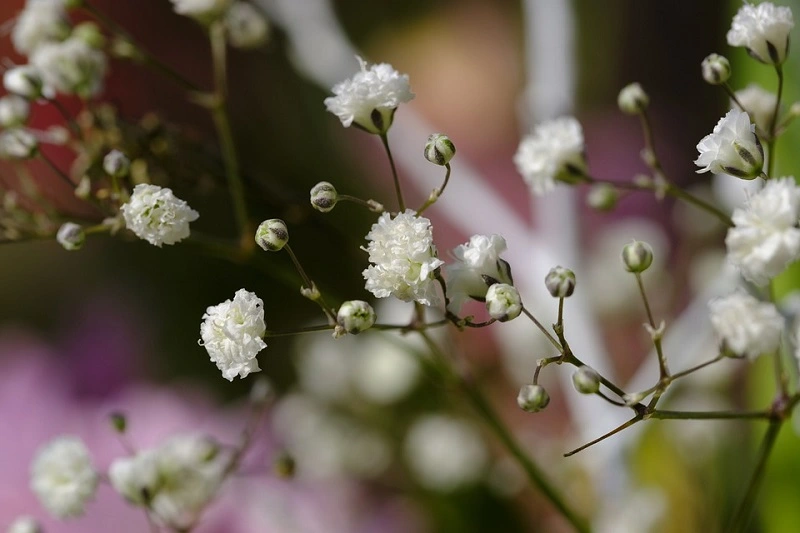
Cosa fare con l’alito del bambino in inverno?
Lo svernamento dell’alito del bambino non è una questione ovvia. È soprattutto la varietà della pianta a decidere se è possibile. Alcune sono annuali, il che significa che non ce n’è bisogno.
Se si scelgono varietà di alito perenne, svernarle potrebbe essere un processo difficile. La pianta ha bisogno di protezione contro le condizioni climatiche sfavorevoli. Per coprirla si possono usare foglie e rami di alberi. Anche una copertura in tessuto è una buona opzione.
Alito di bambino - varietà popolari
Si stima che esistano circa 100 varietà diverse di piante di alito di bambino. Alcune sono annuali, altre perenni. Tenetelo presente quando ne scegliete una in particolare.
Le piante di gipsofila più popolari includono
- Alito del Pacifico (Gypsophila pacifica)
- Alito di rosa strisciante (Gypsophila repens ‘Rosea’)
- Alito di bambino strisciante ‘Letchworth’ (Gypsophila repens ‘Letchworth’)
- Alito di fenicottero comune (Gypsophila paniculata ‘Flamingo’)
- Alito delle Alpi (Gypsophila aretioides)
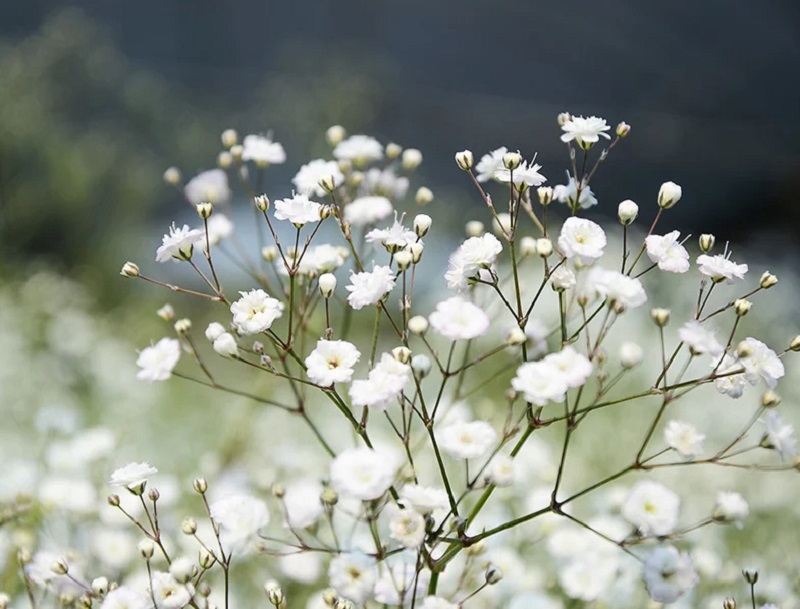
Il fiore dell’alito del bambino è soggetto a malattie e parassiti?
L’alito del bambino è una pianta molto resistente, quindi in pratica non viene colpita da nessuna malattia. L’umidità eccessiva è la minaccia maggiore per questo fiore: se persiste per troppo tempo, le radici della pianta potrebbero iniziare a marcire.
La situazione è simile per quanto riguarda i parassiti. Se ben curata, la pianta non rischia di essere colpita da alcun insetto. Le lumache sono l’unico vero pericolo: attaccano soprattutto le foglie della pianta. Ma ci sono molti modi per proteggere i fiori da loro. Assicuratevi di prendervene cura, soprattutto in primavera.
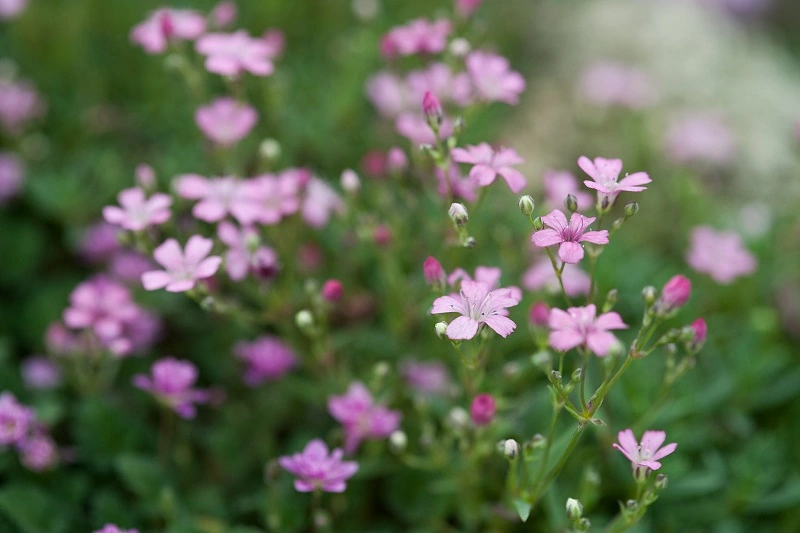
📍 Quando si sviluppano i fiori dell'alito del bambino?
Il periodo di fioritura delle piante di alito dipende molto dalla varietà. La maggior parte di esse mantiene i fiori per tutta l'estate, da giugno a fine agosto. Se il tempo è buono, i fiori della gypsophila possono durare anche a settembre.
📍 Dove piantare il respiro del bambino?
L'alito del bambino richiede condizioni di coltivazione particolari. La pianta deve essere posizionata in un luogo soleggiato e protetto dal vento. Il terreno deve essere leggero e permeabile: la scelta migliore è quella di un terreno sabbioso. Non deve essere troppo umido.
📍 Come piantare il respiro del bambino?
L'alito del bambino può essere seminato direttamente nel terreno. Si possono anche preparare delle piantine. Quest'ultimo metodo è sicuramente migliore. I semi possono essere piantati in contenitori alla fine di gennaio. Le piantine possono essere trasferite in terra già a marzo.
📍 Quanto costa il respiro del bambino?
I semi di alito di bambino sono tra i più economici, indipendentemente dalla varietà della pianta. A seconda di dove si decide di acquistarli, costano tra i 3 e i 5 euro.
Articoli in primo piano




